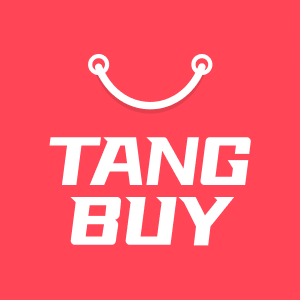Reliable Dropshipping Suppliers: How to Find Them and Avoid Red Flags

Finding Reliable Dropshipping Suppliers is very important for your business. If you choose the wrong partner, you may get slow shipping. You might also get bad product quality. Your customers can become unhappy. More than 90% of dropshipping businesses fail early. Unreliable suppliers are a main reason for this. Many retailers say supplier reliability is their biggest problem. It affects every order and your reputation. You want to do well in dropshipping. You need to build trust and act like a good dropshipper. Stay careful and make smart choices.
More than 90% of dropshipping businesses fail in the first months.
Unreliable suppliers often cause these failures.
Problems include late deliveries, bad product quality, and lost trust.
Key Takeaways
Pick a clear niche. Make a short product list. This helps you find good suppliers fast.
Use trusted supplier directories. Talk to manufacturers. Go to trade shows. These help you find reliable partners.
Check how suppliers talk to you. Look at their product quality. Read their shipping rules. Check their credentials before you work with them.
Look out for red flags. These include high upfront fees, hidden costs, fake promotions, poor quality, and unclear communication.
Ask for product samples. Use safe payment methods. This protects your business from scams.
Start with small test orders. This helps you check suppliers before you grow your business.
Keep written agreements. Talk often with suppliers. This builds strong and trustworthy relationships.
Watch how suppliers perform. Have backup suppliers ready. This helps you fix problems fast and keep customers happy.
Get Ready

Define Your Dropshipping Niche
You want to start strong in dropshipping. The first step is to pick your niche. A niche is a focused market or product category. When you choose a niche, you make it easier to find the right products and suppliers. Think about what you enjoy or know well. Maybe you love fitness, pets, or tech gadgets. You can also look at trends or check what people buy online. Try to pick a niche that has steady demand and not too much competition. If you choose a niche you care about, you will stay motivated.
Tip: Research your competitors. See what they sell and how they market their products. This helps you spot gaps and find your unique angle.
Prepare Product List

Once you have your niche, you need a product list. Write down the items you want to sell. Start with 10 to 20 products. You can always add more later. Make sure your products fit your niche and solve a problem or meet a need. Check if these products are easy to ship and not too fragile. Look for items with good reviews and steady sales on other stores.
List your top products.
Check prices and shipping options.
Make sure you can find reliable suppliers for each item.
You can use tools like Google Trends or Amazon Best Sellers to help you decide. A clear product list will save you time when you start searching for dropshipping suppliers.
Set Up Store Platform
Now you need a place to sell your products. Most people use platforms like Shopify or WooCommerce. These platforms make it easy to build your store, add products, and manage orders. You will also need a domain name for your store. Pick a name that matches your niche and is easy to remember.
You do not need to spend a lot at first. Many new dropshipping businesses start with a budget between $500 and $2,000. Plan for monthly costs like marketing, apps, and platform fees. Also, keep some money aside for emergencies or refunds.
Choose your ecommerce platform.
Register your domain.
Set up basic store design.
Install essential apps for marketing and order management.
Getting these steps right will help you find reliable dropshipping suppliers later. You will know what you need, what you can spend, and what you want to sell.
Clarify Budget and Shipping
You need to know your budget before you start looking for dropshipping suppliers. Setting a clear budget helps you avoid surprises. It also keeps your business safe from spending too much. Think about how much money you can use for your store, marketing, and product samples. You do not need a huge amount to start, but you should plan for every cost.
Start by writing down your main expenses. Here are some things you should include:
Store platform fees (like Shopify or WooCommerce)
Domain name and website hosting
Marketing and ads
Product samples
Dropshipping app or tool subscriptions
Emergency fund for refunds or returns
Tip: Always keep a little extra money for unexpected costs. Dropshipping can have surprises, like sudden shipping price changes or product returns.
Shipping is another big part of your plan. You want to know how your products will get to your customers. Fast and reliable shipping makes your store look good. Slow shipping can make customers upset. Before you pick a supplier, check what shipping options they offer. Some suppliers have free shipping, but it may take longer. Others offer express shipping for a higher price.
Here’s a simple table to help you compare shipping options:
Shipping Option | Average Time | Cost to You | Tracking Available? |
|---|---|---|---|
Standard Shipping | 10-20 days | Low | Sometimes |
Express Shipping | 5-10 days | Medium | Yes |
Premium Shipping | 2-5 days | High | Yes |
You should also think about where your customers live. If most of your buyers are in the US, try to find suppliers with US warehouses. This can make shipping faster and cheaper.
When you know your budget and shipping needs, you can talk to dropshipping suppliers with confidence. You can ask the right questions and avoid deals that do not fit your plan. This step saves you time and helps you find the best partners for your dropshipping business.
Note: Good planning now means fewer problems later. Take your time to get your budget and shipping details right.
Find Reliable Dropshipping Suppliers

Use Supplier Directories
You want to find reliable dropshipping suppliers quickly. Supplier directories help you do this. These directories have thousands of dropshipping suppliers from many countries. You can search by product, niche, or where they are. Many directories check suppliers before adding them. This means you get better choices.
SaleHoo lets you find many pre-vetted dropshipping suppliers. You can search by product or niche. Use filters like location and minimum order quantity. Look at supplier profiles for shipping, prices, and products. Contact suppliers to ask for samples and start selling.
Tip: Check how long a supplier has been in business. Reliable dropshipping suppliers often have at least two years of experience and good customer support.
Supplier directories save you time and help you avoid scams. You get the best dropshipping suppliers all in one place. This is a smart way to start finding suppliers.
Contact Manufacturers
You can go straight to the source. Contacting manufacturers helps you find reliable dropshipping suppliers with better prices and quality. Manufacturers often work with dropshipping businesses and know what you need. You can ask for a list of authorized dropshipping suppliers or see if they offer dropshipping.
Here’s how you can do it:
Search for manufacturers in your niche on sites like Alibaba or Global Sources.
Go to their websites and find the “Contact Us” or “Become a Partner” page.
Send a short message. Tell them about your dropshipping business.
Ask if they work with dropshipping suppliers or offer dropshipping.
Request product samples to check quality and shipping speed.
Manufacturers can connect you with the best dropshipping suppliers. You get direct answers about quality, shipping, and prices. This helps you skip middlemen and find reliable suppliers faster.
Note: Some manufacturers only work with established businesses. Show them your store and explain your plan. This builds trust and helps you get better deals.
Attend Trade Shows
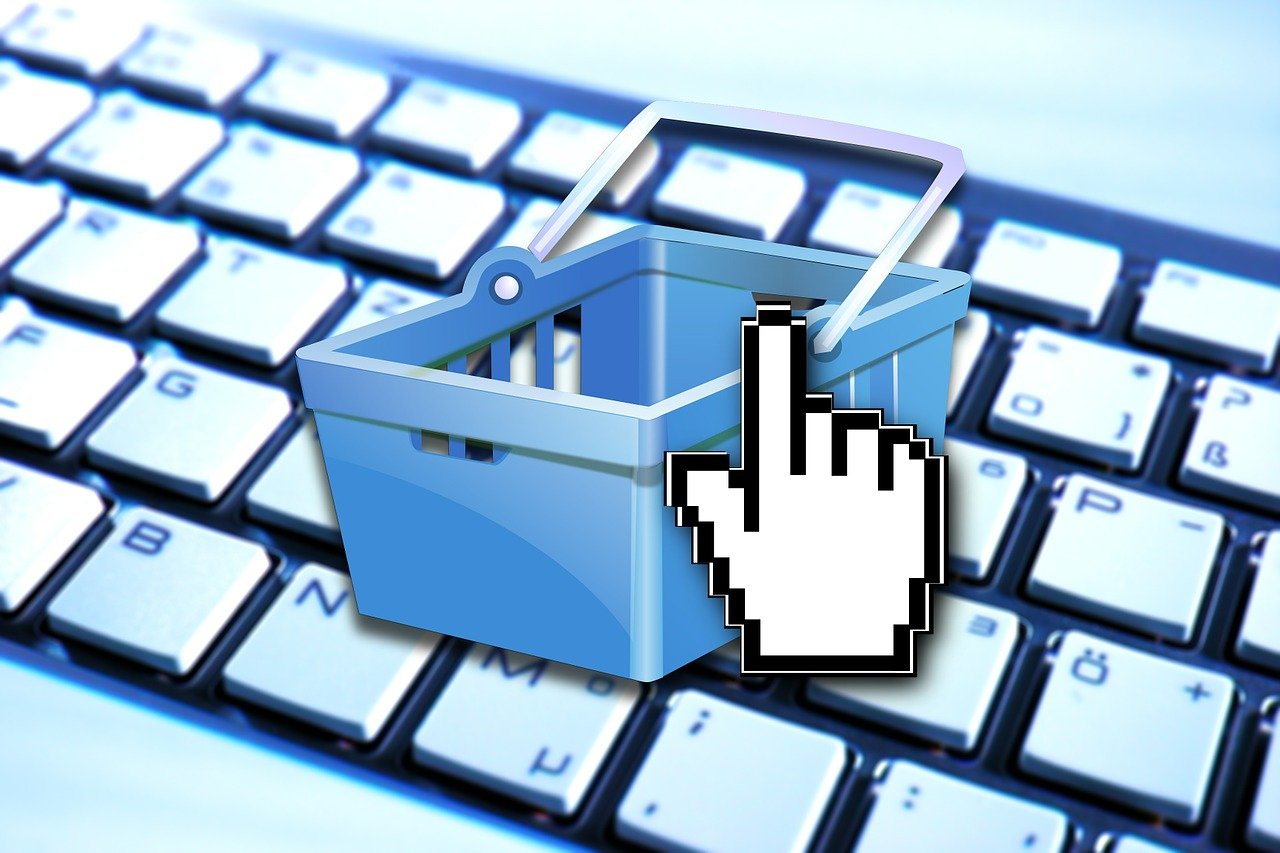
Trade shows are a great way to meet dropshipping suppliers in person. You can see products, ask questions, and compare options right away. Many trade shows focus on certain marketplaces or product types. You get a chance to find the best dropshipping suppliers for your niche.
Here’s what you can do at a trade show:
Walk around and talk to suppliers at their booths.
Ask about their dropshipping programs and shipping.
Check product samples for quality and packaging.
Collect business cards and brochures for later.
Meet other dropshipping businesses and share tips.
Trade shows help you spot reliable dropshipping suppliers and avoid scams. You see how suppliers answer questions and handle problems. You also learn about new products and trends in your niche.

Tip: After the trade show, contact the suppliers you liked. Ask for more details and request samples before you decide.
You can use supplier directories, contact manufacturers, and go to trade shows to find reliable dropshipping suppliers. These steps help you avoid scams and build a strong dropshipping business. You get better products, faster shipping, and happier customers. Picking dropshipping suppliers carefully is the key to success in marketplaces.
Network and Referrals
You can find great dropshipping suppliers by talking to other business owners. Networking lets you learn from people who already use reliable dropshipping suppliers. You hear real stories and get honest advice. You can join online groups, forums, or social media pages. Many marketplaces have groups where sellers share tips and supplier contacts.
Here are some ways to use networking and referrals:
Join Facebook groups about dropshipping and ecommerce.
Ask questions in Reddit threads about dropshipping suppliers.
Go to local business meetups or join online webinars.
Connect with sellers on LinkedIn who work in your niche.
When you ask for referrals, you get trusted advice. People share their experiences with dropshipping suppliers. You learn which suppliers ship fast and offer good products. You also find out who solves problems quickly. You hear about suppliers to avoid too.
Tip: Always thank people who help you. If you find a reliable dropshipping supplier from a referral, tell the person. Good relationships help you get more support later.
Networking helps you find hidden gems. Some of the best dropshipping suppliers do not advertise much. They use word of mouth and long-term partnerships. You can find these suppliers by talking to experienced sellers in marketplaces.
Dropshipping Apps and Platforms
Dropshipping apps and platforms help you connect with reliable dropshipping suppliers. These tools let you search for products, compare suppliers, and manage orders. You can use apps like Oberlo, Spocket, or DSers. Many marketplaces have built-in dropshipping features.
You can use these apps to find the best dropshipping suppliers for your store. Many apps show supplier ratings and reviews. You see how other sellers rate shipping speed, product quality, and customer service. This helps you pick dropshipping suppliers.
Dropshipping platforms also help you automate your business. You can sync products, track orders, and update inventory. You save time and make fewer mistakes. Some platforms even give direct support if you have problems with a dropshipping supplier.
Note: Always test a few suppliers before adding them to your store. Order samples and check how they handle shipping and returns. Reliable dropshipping suppliers care about your business and want you to do well in marketplaces.
Apps and platforms give you more control. You can switch suppliers if you see problems. You can also find new products and grow your store faster. Using these tools helps you build a strong dropshipping business with happy customers.
Dropshipping Supplier Evaluation
Check Communication
You want a dropshipping supplier who replies fast. Good communication means the supplier cares about your business. When you ask questions, see how quickly they answer. Are their answers clear? Do they understand what you need? A good supplier does not make you wait long. They reply in a friendly and professional way.
Send some questions about their products or shipping. Watch if they answer everything or skip things. If their replies are confusing or there are language problems, this can cause trouble later. You want a supplier who makes things simple for you. Fast and clear replies help you fix problems early.
Tip: Suppliers who reply in 24 hours and give helpful answers are usually more reliable.
Assess Product Quality
Good products make customers happy and help your store grow. Always ask for samples before selling new items. When you get a sample, check the packaging, labels, and the product. Does it look like the pictures and match the description? Is the packaging strong enough to protect the item?
Look for dropshipping suppliers who care about every detail. They should give correct descriptions and clear pictures. If you see weak packaging or fake-looking items, this is a warning sign. You want real products that meet standards. Good products bring good reviews and repeat buyers.
Here’s a quick checklist for product quality:
Does the product look and feel right?
Is the packaging strong and neat?
Are the labels clear and correct?
Does the product match the online description?
If you find a good supplier, you will see they care about quality and want you to do well.
Review Shipping Policies
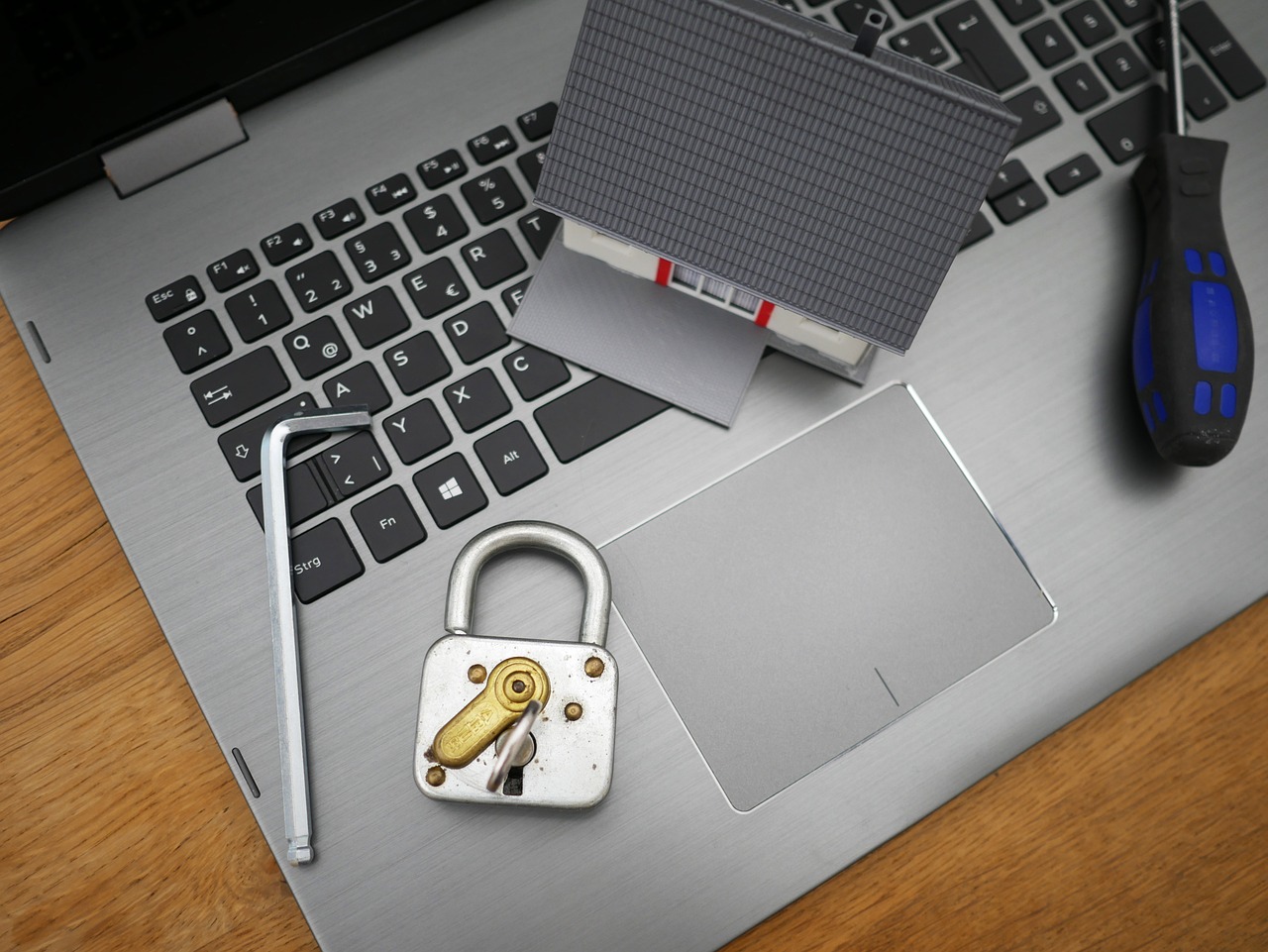
Shipping is important in dropshipping. You need to know how your dropshipping supplier ships orders. Check their shipping choices, delivery times, and costs. Reliable dropshipping suppliers offer more than one shipping method. They also give tracking numbers so you and your customers can follow orders.
Ask about their return and exchange rules. A good supplier has clear rules that protect you and your buyers. If a supplier cannot explain their shipping or hides fees, this is a red flag. You want dropshipping suppliers who ship on time and handle returns fairly.
Here’s a table to help you compare shipping policies:
Supplier Name | Shipping Methods | Tracking Provided | Return Policy |
|---|---|---|---|
Supplier A | Standard, Express | Yes | 30-day easy return |
Supplier B | Standard only | Sometimes | No returns |
Supplier C | Multiple options | Yes | 14-day exchange |
Pick suppliers with clear and fair shipping and return rules. This keeps your customers happy and protects your business reputation.
Verify Credentials
You want to work with verified suppliers. This step helps you avoid scams and keeps your dropshipping business safe. Always check if your supplier has real business documents. Ask for their business license or registration number. You can also look for certificates that show they follow safety or quality rules.
Here are some ways to verify your suppliers:
Visit the supplier’s website. Look for a real address and phone number.
Ask for proof of brand authorization if you plan to sell branded products.
Search for the company name online. See if they show up in business directories.
Check if they have awards or memberships in trade groups.
If a supplier refuses to share their credentials, you should be careful. A good supplier will not hide this information. You can also use third-party services to check if a business is real. This step protects your reputation and helps you build trust with your customers.
Tip: Always verify your suppliers before you place your first order. This small step can save you from big problems later.
Analyze Customer Service
Customer service tells you a lot about a supplier. You want a partner who helps you solve problems fast. Try sending the supplier a few questions. See how long it takes for them to reply. Notice if they answer all your questions or skip some.
A good supplier will:
Reply within 24 hours.
Give clear and friendly answers.
Offer help with returns or damaged items.
Share updates about your orders.
If you get slow replies or rude answers, this is a warning sign. You want a supplier who cares about your business. Good customer service means fewer headaches for you and happier customers.
Here’s a quick table to help you compare customer service:
Supplier Name | Response Time | Helpfulness | Problem Solving |
|---|---|---|---|
Supplier X | Fast | High | Excellent |
Supplier Y | Slow | Low | Poor |
If you feel ignored or confused, keep looking for a better partner.
Check Reviews and Ratings
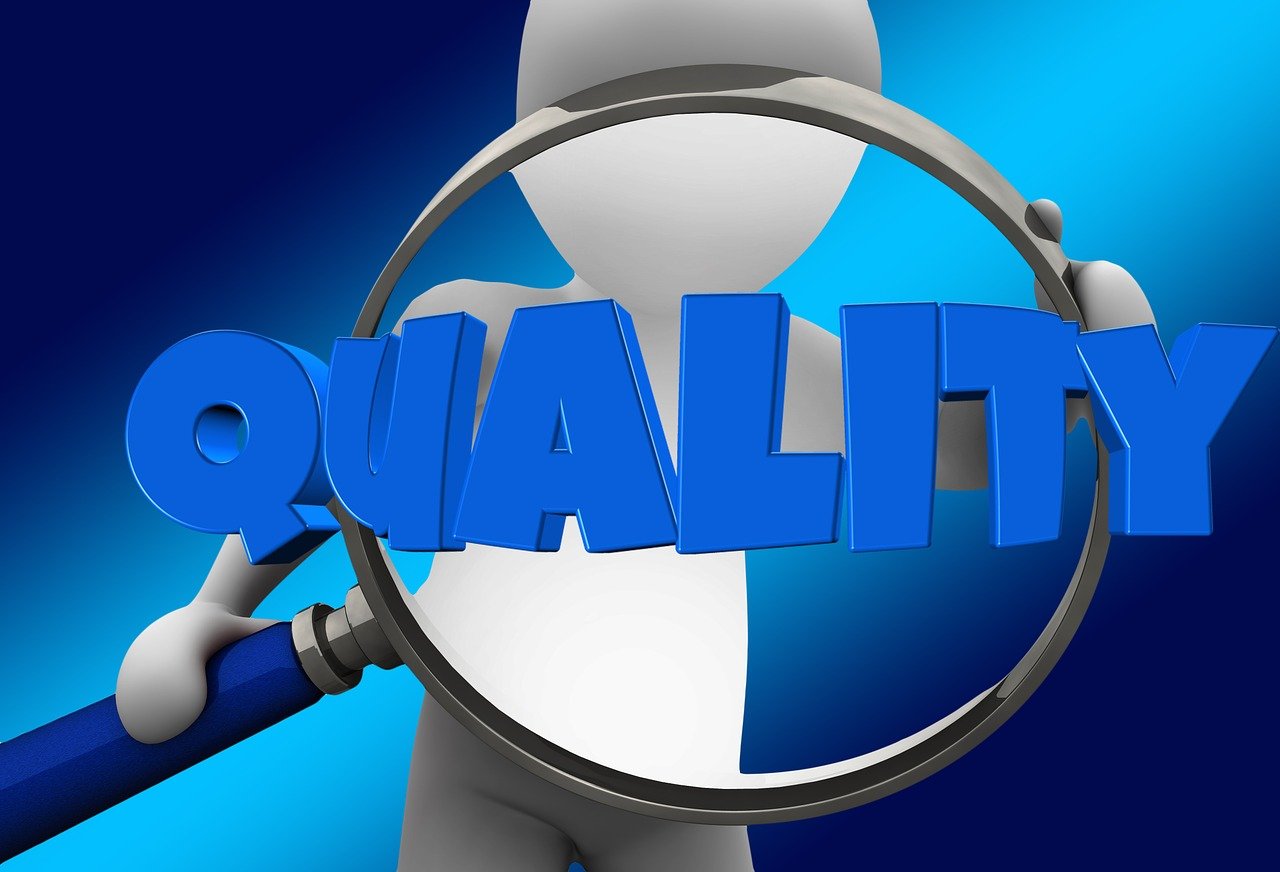
You should always check supplier reviews and ratings before you make a choice. These reviews come from other dropshipping store owners. They share real stories about shipping speed, product quality, and customer service. High ratings mean the supplier does a good job most of the time.
Look for these things when you read reviews:
Are there lots of positive ratings?
Do people mention fast shipping and good products?
Are there complaints about fake and negative reviews?
Does the supplier reply to bad reviews and try to fix problems?
Be careful with reviews that sound too perfect. Some suppliers post fake and negative reviews to trick buyers. Try to read reviews on different websites, not just the supplier’s own page. This gives you a better picture of their reputation.
Note: One or two bad reviews are normal. If you see many complaints, it’s time to move on.
Checking supplier reviews and ratings helps you find a good supplier and avoid trouble. This step makes your dropshipping business stronger and keeps your customers happy.
Red Flags

High Upfront Fees
You should always watch out for suppliers who ask for high upfront fees. Real dropshipping suppliers usually do not charge you big amounts just to work with them. If a supplier wants a large payment before you even make a sale, this is a big warning sign. Many dropshipping scams start with high fees and empty promises.
Here are some things to look out for:
Suppliers who ask for a “membership” or “setup” fee that seems too high.
Requests for payment outside of trusted platforms or secure payment gateways.
Promises of instant profits if you pay right away.
If a deal sounds too good to be true, it probably is. Real suppliers make money when you make sales, not before.
Some common dropshipping scams use high upfront fees to trick new sellers. They may say you need to pay to access “exclusive” products or “secret” supplier lists. Always compare fees with other suppliers and check reviews before you pay anything.
Lack of Transparency
Transparency is a must when you pick a dropshipping supplier. If a supplier hides important details or gives you vague answers, you should be careful. Many fake or unreliable suppliers use this trick to cover up their bad business practices.
You might notice these signs:
The supplier does not share clear shipping times or return policies.
You cannot find real contact information or a business address.
They avoid answering your questions about where products come from.
Dropshipping suppliers often lack transparency, and this is a frequent problem in the industry. Real suppliers will tell you about their business, shipping, and how they handle returns. If you see missing details or confusing answers, this is one of the biggest red flags.
Always ask for clear information. If a supplier cannot explain their process, you should look for someone else.
You can protect yourself by doing a background check. Look for business licenses, read reviews, and ask for product samples. These steps help you spot scams and avoid common dropshipping scams that rely on hiding the truth.
No Physical Address
A real business has a real address. If you cannot find a physical address for your supplier, you should be cautious. Many scams use fake addresses or no address at all. This makes it hard to track them down if something goes wrong.
Check the supplier’s website and business listings. Look for a street address, not just a P.O. box or email. You can even search the address online to see if it matches a real business location.
Here’s a quick checklist to help you:
Can you find a full street address on their website?
Does the address show up on Google Maps?
Is there a phone number you can call?
If you cannot answer “yes” to these questions, you might be dealing with a risky supplier. Many dropshipping scams use fake contact details to avoid getting caught. You want a partner who is easy to reach and open about their business.
Tip: Always double-check the address before you place your first order. This small step can save you from big problems later.
Fake Sales or Promotions
You might see suppliers offering huge discounts or “limited-time” sales. These deals can look exciting, but you need to be careful. Some suppliers use fake sales or promotions to trick new dropshippers. They want you to act fast and pay before you check the details.
Here are some signs of fake sales or promotions:
The supplier always has a sale, no matter when you visit.
The discount seems too big to be real, like 80% off every product.
The timer for the sale resets every time you refresh the page.
The supplier pressures you to buy now or miss out.
If you see these tricks, stop and ask yourself, “Is this real?” Real suppliers do not run endless sales. They do not use fake countdowns to rush you.
You can protect yourself by checking prices on other sites. If the “sale” price is the same as the regular price somewhere else, it’s probably a scam. Dropshipping scams often use fake promotions to get your money fast. Always take your time and compare before you buy.
Poor Quality Control
Product quality matters a lot in dropshipping. If your supplier does not check their products, you can get stuck with returns and angry customers. Poor quality control is a big red flag. It can ruin your store’s reputation.
Look for these warning signs:
The supplier cannot show you real product photos or samples.
You get samples that look different from the pictures online.
Reviews mention broken, damaged, or missing items.
The supplier does not answer questions about how they check product quality.
You should always ask for a sample before you add a new product to your store. Test the product yourself. Check the packaging, the labels, and the item. If you see problems, do not ignore them. Product quality scams can cost you a lot of money and trust.
Tip: Read reviews from other dropshippers. If many people complain about the same problems, find a new supplier.
A good supplier will care about quality. They will fix mistakes and help you solve problems. If you see poor quality control, walk away. Your business depends on happy customers and good products.
Counterfeit Products
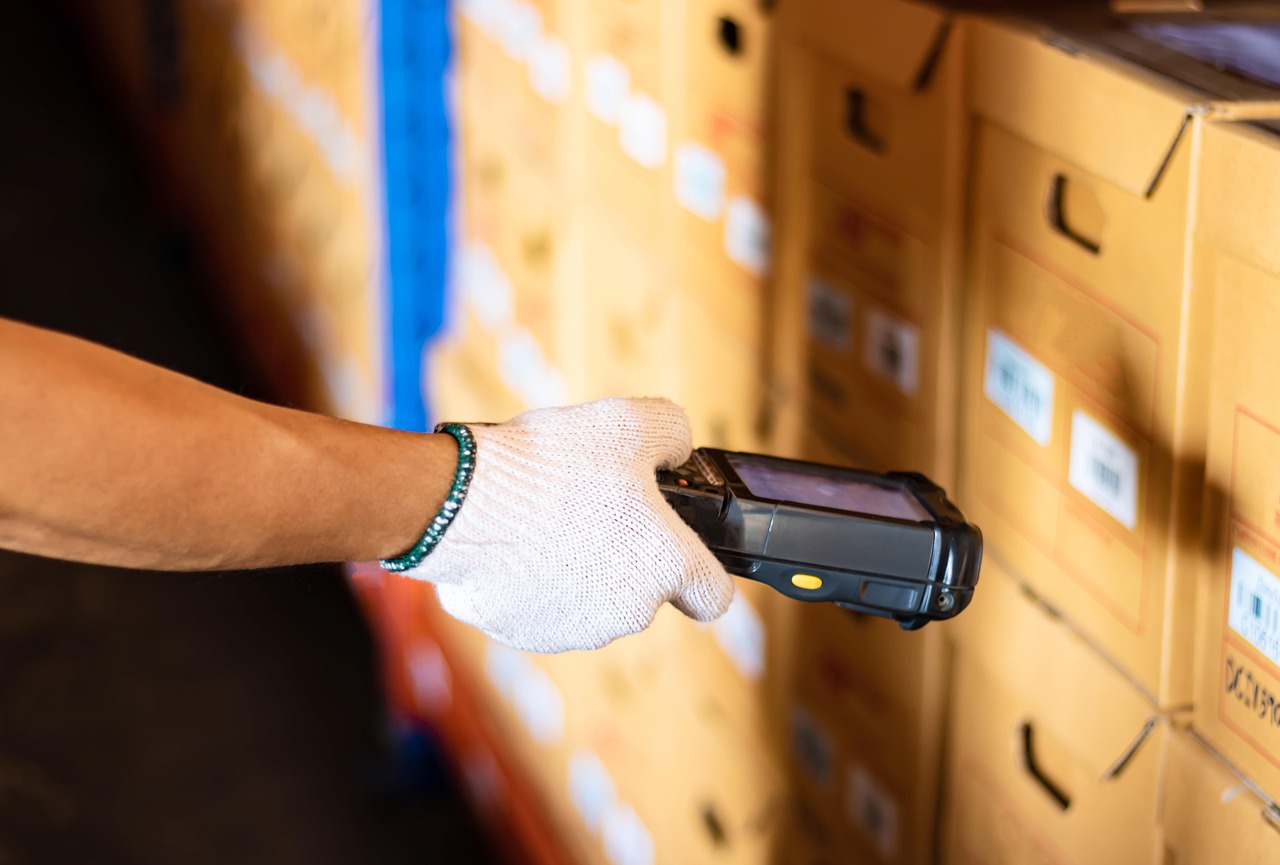
You need to watch out for counterfeit products when you pick a dropshipping supplier. Counterfeit means fake or copied items that look like real brands. Selling counterfeit items can get your store in trouble. You might lose your payment account or even face legal action.
Here’s how you can spot counterfeit products:
The supplier offers famous brands at very low prices.
The supplier cannot show proof they are allowed to sell those brands.
The product photos look copied or blurry.
Reviews mention fake or knock-off items.
Never trust a supplier who cannot prove they have permission to sell branded goods. Counterfeit products hurt your business and your customers.
Dropshipping scams often include counterfeit goods. These scams can damage your reputation and cost you money. Always ask for brand authorization if you want to sell name-brand products. If you see any signs of counterfeit, find a different supplier right away.
Warning Sign | What It Means |
|---|---|
Super low prices | Likely fake or unauthorized goods |
No brand authorization | Supplier may not be legit |
Poor product photos | Possible counterfeit or scam |
Bad reviews about fakes | High risk of counterfeit items |
Stay alert for these red flags. Protect your business by choosing honest suppliers who care about real product quality.
Unclear Communication
You want a supplier who talks to you clearly and quickly. If you ask a question and get a confusing answer, that’s a problem. Some suppliers use vague language or avoid your questions. This makes it hard for you to trust them. You might see this when they dodge details about shipping, product quality, or returns.
Here are some signs of unclear communication:
The supplier gives short or incomplete answers.
You get replies that do not match your questions.
They use lots of technical words or broken English.
You feel lost after reading their emails.
If you see these signs, take them seriously. Unclear communication is one of the biggest red flags in dropshipping. It can lead to mistakes, delays, and unhappy customers. You want a partner who explains things in a way you understand.
Tip: Always test a supplier’s communication before you start working with them. Send a few questions and see how they respond. If you feel confused or ignored, look for someone else.
Good communication builds trust. It helps you solve problems fast and keeps your business running smoothly. Never ignore this warning sign.
Hidden Fees
Hidden fees can ruin your profits. Some suppliers add extra charges that you do not see at first. These fees might show up after you place an order or when you get your invoice. You might see charges for packaging, handling, or even “processing.” Sometimes, these fees turn a good deal into a bad one.
Watch out for these common hidden fees:
Extra shipping costs not listed on the website
Handling or packaging fees added at checkout
Small print charges for returns or exchanges
Monthly or yearly “service” fees
Here’s a simple table to help you spot hidden fees:
Fee Type | When It Appears | What To Do |
|---|---|---|
Shipping Surcharge | After order placed | Ask for full shipping costs upfront |
Handling Fee | On invoice | Request a sample invoice |
Return Fee | During returns process | Check return policy |
Service Fee | Monthly or yearly bill | Read all agreements |
Note: Always ask for a full price breakdown before you agree to work with a supplier. If a supplier refuses to share this, you might be dealing with scams.
Hidden fees are a common trick in dropshipping scams. They can eat into your profits and make it hard to run your store. Stay alert and always read the fine print. If something feels off, trust your gut and move on.
Avoid Dropshipping Scams
Request Samples
You want to know what your customers will get before you start selling. Requesting product samples is one of the smartest moves you can make. When you order samples, you see the real quality, packaging, and shipping speed. This step helps you spot problems early. If the product looks different from the photos or arrives damaged, you know to look for another supplier.
Many dropshipping businesses ask for samples before they sign any deals. This lets you check if the supplier ships on time and if the product matches the description. You can also test how the supplier handles your questions and requests. If they refuse to send samples or make excuses, that’s a big warning sign.
Tip: Always order more than one sample if you can. This helps you see if the supplier is consistent with quality and shipping.
Use Secure Payments
Paying suppliers safely is just as important as picking the right products. You should always use secure payment gateways when you pay for orders. Trusted options include PayPal, Stripe, Amazon Pay, Authorize.net, and Apple Pay. These services protect your money and help you track payments. They also offer support if something goes wrong.
Here’s a quick table showing popular secure payment methods for dropshipping:
Payment Gateway | Countries Available | Main Features |
|---|---|---|
PayPal | 200+ | Buyer protection, fast payout |
Stripe | 40+ | Credit cards, easy integration |
Amazon Pay | 18 | Trusted brand, multi-currency |
Authorize.net | 33 | Fraud tools, global reach |
Apple Pay | 70+ | Mobile payments, secure |
Using secure payments helps you avoid scams and keeps your business safe. You should never send money by wire transfer or pay outside trusted platforms. If a supplier asks for payment in a strange way, stop and ask questions.
Note: Always upload tracking numbers and keep good records. This helps you solve problems with payment providers if needed.
Start Small

You do not need to spend a lot of money at first. Starting small is a smart way to test suppliers and products. Place a small order and see how the supplier handles it. Watch for shipping speed, product quality, and customer service. If everything goes well, you can order more later.
Many dropshipping scams target new sellers who invest big money right away. You should avoid paying for bulk products or expensive starter packages until you make some sales. Try free trials for dropshipping tools before you pay for subscriptions. This lets you see if the service is real and helpful.
Here are some steps to help you start small:
Test the market with a few products.
Order samples before selling.
Use free trials for apps and platforms.
Check supplier support by sending questions.
Grow your business slowly as you learn.
Tip: Starting small helps you avoid dropshipping scams and keeps your risk low. You can always scale up once you trust your suppliers.
Document Agreements
You need to keep your dropshipping business safe. Writing down every agreement with suppliers helps you do this. If you have things written, you can avoid confusion and scams. You also have proof if something goes wrong.
If you only talk by phone or chat, you might forget deals. Sometimes, suppliers change their promises or say they did not agree. Written agreements show what was decided and help you prove your side.
Here are things you should always write down:
Product details like name, description, price, and quality
Shipping times and ways
Return and refund rules
Payment terms and fees
Minimum order amounts
Warranty or guarantees
Tip: Use email for important talks. Save all messages and files. If you use chat apps, take screenshots and keep them safe.
A simple agreement might look like this:
Agreement Item | Example Details |
|---|---|
Product Quality | "All items must match sample" |
Shipping Time | "Orders shipped within 3 days" |
Payment Terms | "Pay after order confirmation" |
Return Policy | "30-day returns accepted" |
You can ask your supplier to sign a basic contract. You do not need fancy legal words. Just write what each side will do. Both you and your supplier should keep a copy. If your supplier is in another country, learn their rules and customs.
Suppliers sometimes send invoices or order confirmations. Save these papers. They show what you ordered, how much you paid, and when you should get delivery. If there is a problem, these papers help you prove your case.
Note: Do not trust promises made by talking only. Always get deals in writing. If a supplier will not write things down, that is a warning sign.
You can use cloud storage like Google Drive or Dropbox to organize files. Make folders for each supplier. Store contracts, emails, invoices, and product photos. This helps you find what you need later.
Writing down agreements helps you avoid dropshipping scams. You stay in control and build trust with suppliers. If you need proof, you have it ready. This step keeps your business safe and helps you worry less.
Build Supplier Relationships
Set Expectations
You want your dropshipping business to work well. The first step is to set clear expectations with your suppliers. When you start with a new supplier, talk about important things. Discuss order times, shipping choices, and product quality. Write these details in a simple agreement. This helps everyone know what will happen.
Treat your suppliers like partners, not just sellers. Be respectful and act professional. If you act like a partner, your supplier will help you more. You can help your supplier by sharing your needs and sales plans. This makes it easier for them to deliver on time.
Tip: Remember your supplier’s time zone and holidays. This helps avoid delays and shows you care about their business.
Communicate Regularly
Good communication keeps your business strong. You should talk to your suppliers often, not only when there is a problem. Use email, phone, or chat apps to stay in touch. Share updates about your store and ask questions. Give feedback when needed. Talking often builds trust and stops confusion.
Regular check-ins help you find problems early. If you see a shipping delay or product issue, talk to your supplier fast. This helps fix things before customers notice. Clear and frequent talks keep you and your supplier on the same page about prices and shipping.
Here are ways regular communication helps:
You get news about stock and new products.
You can solve problems like shipping delays quickly.
You build a stronger partnership.
Note: Always thank your supplier for good service. Saying thanks helps your relationship.
Monitor Performance
You need to know if your supplier does a good job. Tracking their work helps you spot issues early. Use simple checks like delivery time, order accuracy, and customer feedback. You can keep a scorecard or spreadsheet for these numbers.
Here’s a table with key things to watch:
Metric | What to Look For |
|---|---|
On-time Delivery Rate | Orders arrive as promised |
Order Accuracy Rate | Few mistakes or wrong items |
Customer Satisfaction | Positive reviews and feedback |
Refund/Return Rate | Low rates mean good quality |
If you see problems, talk to your supplier and share feedback. Work together to fix issues. When you track performance and give feedback, your supplier knows you care about quality. This helps both of you do better.
Keep backup suppliers ready in case you need to switch. This keeps your store running if one supplier has trouble.
Negotiate Deals
You want the best prices and terms from your dropshipping suppliers. Negotiating deals helps you save money and grow your business. You do not need to be an expert negotiator. You just need to ask the right questions and know what matters most.
Start by knowing your numbers. Write down your target price, shipping costs, and order volume. Suppliers respect buyers who know what they want. If you show that you understand your business, you get better offers.
Here are some tips to help you negotiate:
Ask for volume discounts. If you plan to sell more products, tell your supplier. Many suppliers give lower prices for bigger orders.
Request better shipping rates. Shipping can cost a lot. Ask if the supplier can offer cheaper or faster options.
Check for free samples or trial orders. Some suppliers will send samples for free or let you place a small test order.
Negotiate payment terms. You can ask to pay after delivery or get longer payment periods. This helps your cash flow.
Look for bundle deals. If you sell products that go together, ask for a bundle price.
Tip: Always be polite and professional. Suppliers want to work with buyers who respect them. If you build trust, you get better deals.
You can use a simple table to compare offers from different suppliers:
Supplier Name | Product Price | Shipping Cost | Payment Terms | Extras Offered |
|---|---|---|---|---|
Supplier A | $8 | $2 | Net 30 days | Free samples |
Supplier B | $7.50 | $2.50 | Prepay | Bundle deal |
Supplier C | $8.25 | $1.75 | Net 15 days | Trial order |
You do not have to accept the first offer. If you think the price is too high, ask if they can do better. If you see hidden fees, ask for a breakdown. Suppliers expect you to negotiate. They often have room to adjust prices or terms.
Sometimes, you get extra value by asking for faster shipping or better packaging. You can also ask for support with returns or damaged items. If you work with a supplier for a long time, ask for loyalty discounts.
Note: Write down every deal you make. Save emails or contracts. This helps you avoid confusion later.
Negotiating deals is not just about price. You want good service, fast shipping, and clear rules. If you feel unsure, ask more questions. The best suppliers want you to succeed. They will help you find a deal that works for both sides.
You can get better deals if you stay friendly, know your numbers, and ask for what you need. Good negotiation helps your dropshipping business grow and keeps your customers happy. 😊
If Problems Arise
Address Issues

Problems can pop up in dropshipping, even if you pick your suppliers carefully. Maybe an order gets delayed, a product arrives damaged, or an item goes out of stock. When this happens, you need to act fast and keep your customers happy.
Here’s what you should do:
Talk to your customer right away. Let them know about the problem. Say sorry and explain what happened. Offer a refund, replacement, or another product if you can.
Contact your supplier. Tell them about the issue. Ask for a fix, like a refund or a new product. Make sure they know you expect better service.
Check your return and refund policy. Make sure it matches what your supplier offers. This helps you handle returns smoothly.
Share updates with your customer. If shipping is late, give them new delivery dates. Sometimes, a small gift or discount can help keep them happy.
Double-check tracking info. Make sure it’s correct before you send it to your customer.
Tip: Always keep records of your chats with both customers and suppliers. This helps if you need proof later.
Escalate Disputes
Sometimes, a problem does not get fixed right away. Maybe your supplier does not reply, or they refuse to help. In these cases, you need to take things up a notch.
Send a clear message. Tell your supplier what went wrong and what you want them to do. Be polite but firm.
Use your payment platform. If you paid with PayPal or another secure method, you can open a dispute. This helps you get your money back if needed.
Show proof. Share photos, emails, or order details to back up your claim.
Keep your customer in the loop. Let them know you are working on the problem and will update them soon.
If your supplier keeps making mistakes, it might be time to move on. You deserve a partner who helps your business grow.
Find Alternatives
You do not have to stick with one supplier forever. If you keep having problems, look for other options. Many dropshippers work with more than one supplier to stay safe.
Build relationships with several suppliers. This way, you have a backup if one lets you down.
Try local suppliers for faster shipping and lower costs.
Use dropshipping platforms like Spocket to find reliable suppliers in the US and EU.
Keep researching new suppliers and trends. This helps you stay ahead of the competition.
Suggest other products to your customers if something is out of stock.
Note: Always test new suppliers before you trust them with big orders. Place a small order first and check their quality and speed.
Having backup suppliers and a plan for problems keeps your dropshipping business strong. You can handle surprises and keep your customers coming back.
You should always check each supplier before you trust them. Make sure they talk clearly and answer your questions. Read reviews to see what other people say. Look for fair return rules so you can fix problems. Good suppliers help you avoid trouble and keep customers happy. If you do these things, you lower your risk. You can build a business that lasts longer. Stay careful and listen to your feelings. Work with partners who want you to do well in dropshipping. Start now and use these tips to help your store grow.
Remember, having good relationships with suppliers helps you solve problems faster and keeps your business working well.
FAQ
What is a dropshipping supplier?
A dropshipping supplier is a company that stores products and ships them to your customers. You sell the items in your store, and the supplier handles the packing and delivery for you.
How do you know if a supplier is reliable?
You can check reviews, ask for samples, and see how fast they reply to your questions. Reliable suppliers share clear information and have good customer service.
Do you need to pay to work with a dropshipping supplier?
Most real suppliers do not charge high upfront fees. You might pay for samples or a small setup fee, but big payments before selling are a red flag.
Can you use more than one supplier?
Yes! Many dropshippers use several suppliers. This helps you avoid problems if one supplier runs out of stock or has shipping delays.
What should you do if a supplier sends bad products?
Contact the supplier right away. Ask for a refund or replacement. Always keep records of your orders and messages. Good suppliers will help fix the problem.
How fast do dropshipping suppliers ship orders?
Shipping times depend on the supplier and where your customers live. Some offer fast shipping in 2–5 days, while others take 10–20 days. Always check before you start selling.
Can you change suppliers if you are not happy?
Absolutely! You can switch suppliers anytime. Test new suppliers with small orders first. This keeps your business running smoothly and your customers happy.
What is the best way to pay a dropshipping supplier?
Use secure payment methods like PayPal or Stripe. These services protect your money and help you solve problems if something goes wrong.

TangBuy: A Smarter Way to Dropship in 2025
If you're looking to stay competitive with dropshipping in 2025, speed and trend-awareness are key. TangBuy helps you stay ahead with real-time product trends, fast fulfilment, and factory-direct sourcing. With over 1 million ready-to-ship items, 24-hour order processing, and seamless Shopify integration, TangBuy makes it easier to test, scale, and succeed in today's fast-moving eCommerce landscape.
See Also
Selecting Trustworthy Wholesale Sources For Affordable Bulk Shoes
Discovering Dependable Wholesale Jeans Vendors For Your Company
Essential Strategies For eBay Dropshipping Success In 2025
Deciding Between Dropshipping And Wholesale Options For Business
